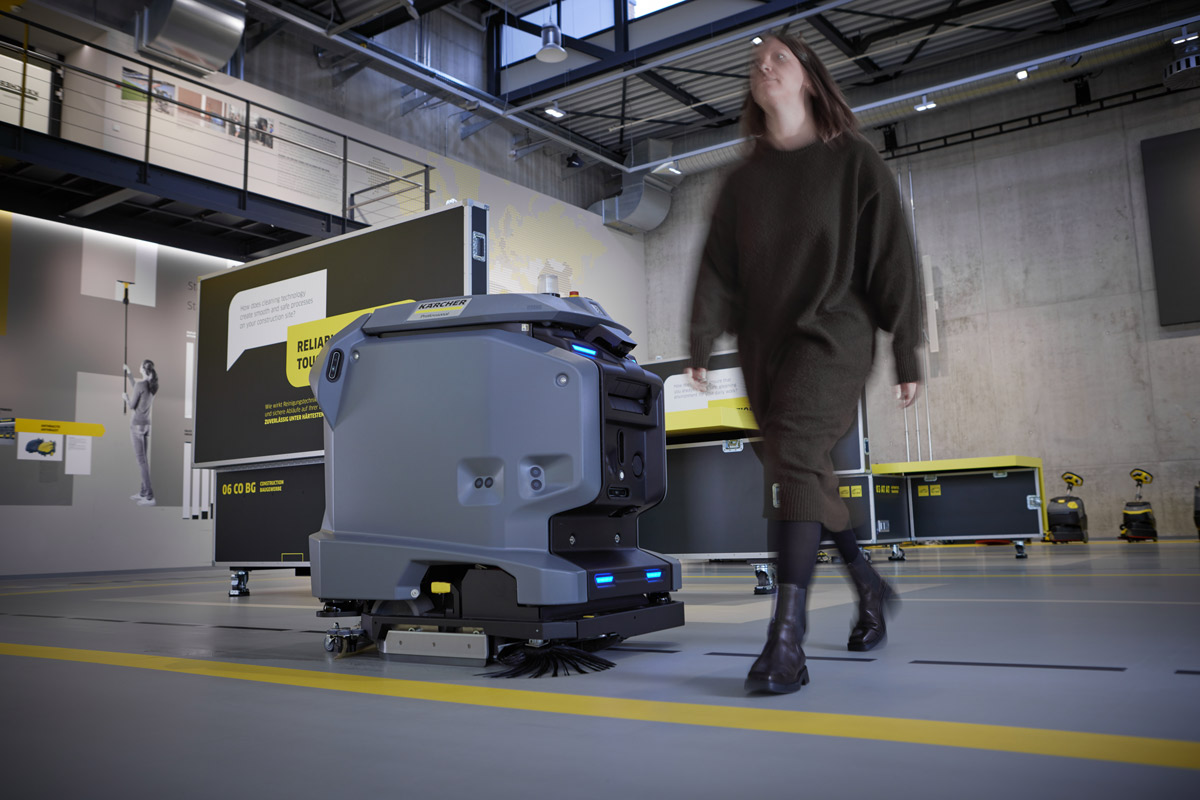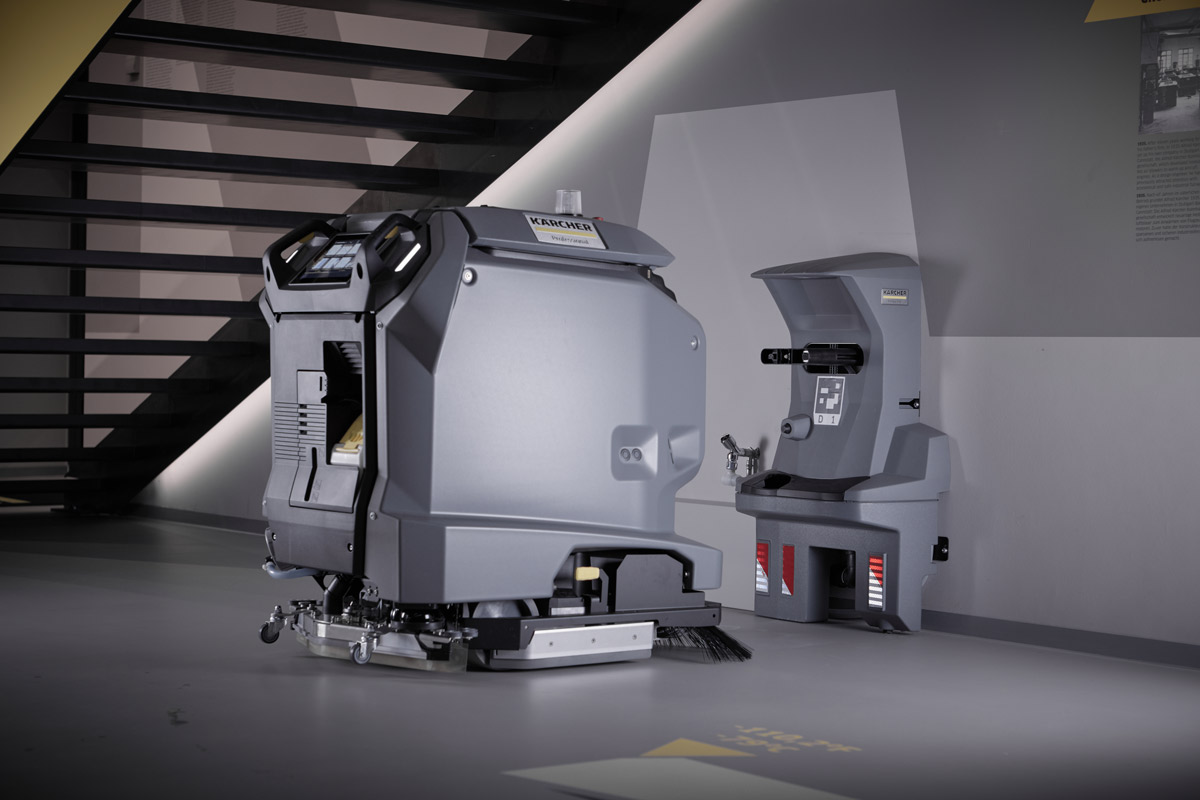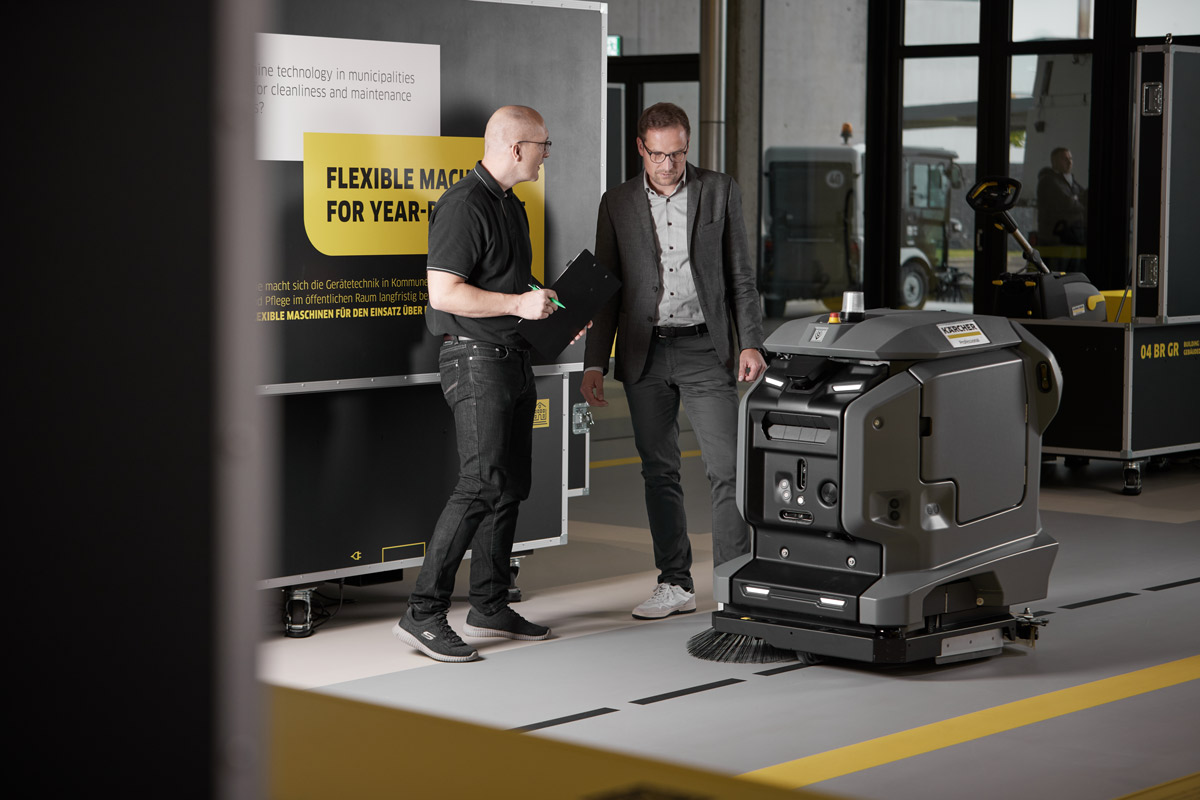KIRA does the cleaning without any help
From a weather point of view, what could be better than a rainy fall day to pay a visit to the headquarters of Kärcher in Winnenden, near Stuttgart? After all, we have brought plenty of dirt and water with us from outside. Inside, however, everything is – as you might expect – absolutely spotless. Some of the firm’s cleaning appliances are on display in the Kärcher customer center, but one of them does its job all on its own – the KIRA B 50 autonomous scrubber-dryer. KIRA scrubs and dries the floor completely autonomously and has been designed for business customers in the transport and retail sectors, in shopping malls, and in health care.
Safety testing and international certification
The manufacturer’s main focus was on safety and reliability. DEKRA monitored and evaluated safety testing on the product, issuing Kärcher with international certification based on the IECEE CB scheme for electronic equipment and components, a multilateral certification system governed by international standards of the International Electrotechnical Commission (IEC).
As in all areas, devices with autonomous functionality are subject to particularly strict regulations. In the case of KIRA, we had to apply relatively new standards.
Enrico Eberlein, inspection engineer from DEKRA Testing and Certification
Strong regulation of autonomous functions
KIRA drives itself, meaning safety is the number one priority. With this in mind, we paid particularly close attention to its behavior in respect of obstacles, unprotected edges, and braking distances,” points out Enrico Eberlein, the inspection engineer from a team at DEKRA Testing and Certification who was responsible for certifying the project. Eberlein and his colleagues, all of whom are based in Dresden, usually inspect electrical household appliances and electric tools. KIRA was their first autonomous robot. “As in all areas, devices with autonomous functionality are subject to particularly strict regulations. In the case of KIRA, we had to apply relatively new standards.”
Teach and Repeat
As he talks, KIRA does its rounds in the Kärcher customer center at speeds of up to 2.7 mph. Its lights are set to blue, which means it is in autonomous mode. The appliance can, however, also be operated manually. “KIRA can find its own way around the space,” explains Dr. Manuel Drust, a Project Manager in the robotics division of Kärcher. “But the user first has to train it on the room.” To do so, the machine has to be set to “teach” mode, allowing the operator to train the machine on the route in question; in “repeat” mode, the machine will then follow the pre-programmed route itself. There is no limit to the number of programs that can be entered. “In the future, the degree of automation will increase even further,” explains Drust, citing calendar-based cleaning schedules as an example.
Reliable obstacle detection and braking
KIRA finds its way around the space using laser sensors and 3D cameras, drawing its own map. The 3D cameras map their surroundings in the form of point clouds, enabling the robot to detect and mark obstacles. Thanks to sensors, KIRA is even able to recognize sudden contact with hazards, such as unprotected edges and other impediments, while operational. If you get in the robot’s way by suddenly walking out in front of it, it will come to an abrupt halt. This shows that the brakes are in good working order.
First robot of its kind in the professional sector
Once it has done its job, KIRA returns independently to its docking station, empties its wastewater tank refills its fresh water tank, and charges itself back up. By virtue of its 160 Ah lithium-ion battery, the robot boasts an operating time of roughly three to four hours, which equates to nearly 11,000 square feet cleaned per hour. “This figure varies depending on the on-site conditions and can even be higher in the case of open spaces,” says Drust. As such, KIRA helps employees in supermarkets, production facilities, warehouses, and airports to keep the floor clean – just like smaller robot cleaners in private households. The robot is the first of its kind in the business segment. “With this successful project, we hope to gain an even stronger foothold in the certification of robotics products and expand our expertise still further,” remarks Enrico Eberlein. In short, technology that is the subject of heated discussion in the automotive sector already works perfectly at Kärcher. KIRA even signals when turning a corner.




